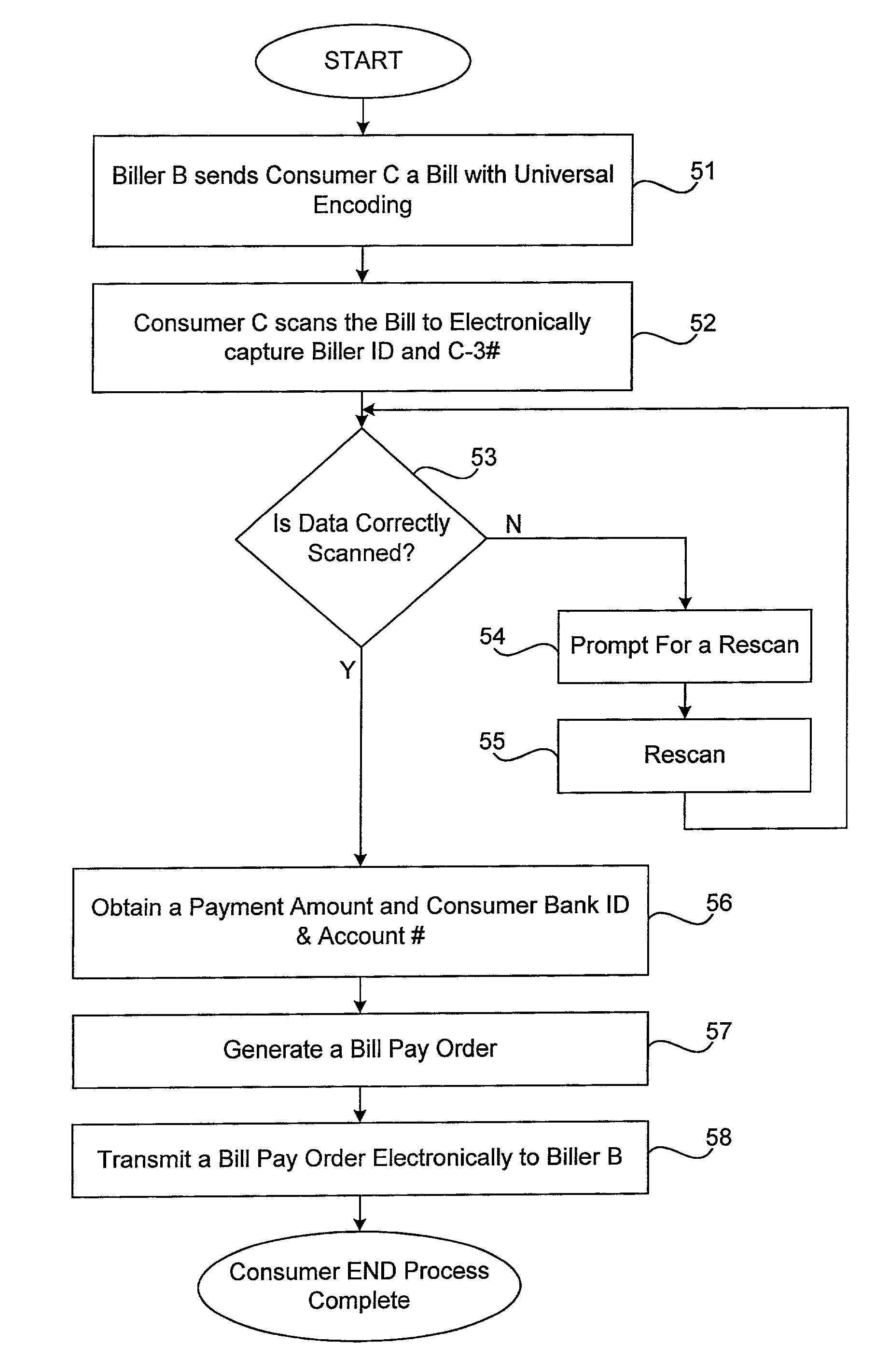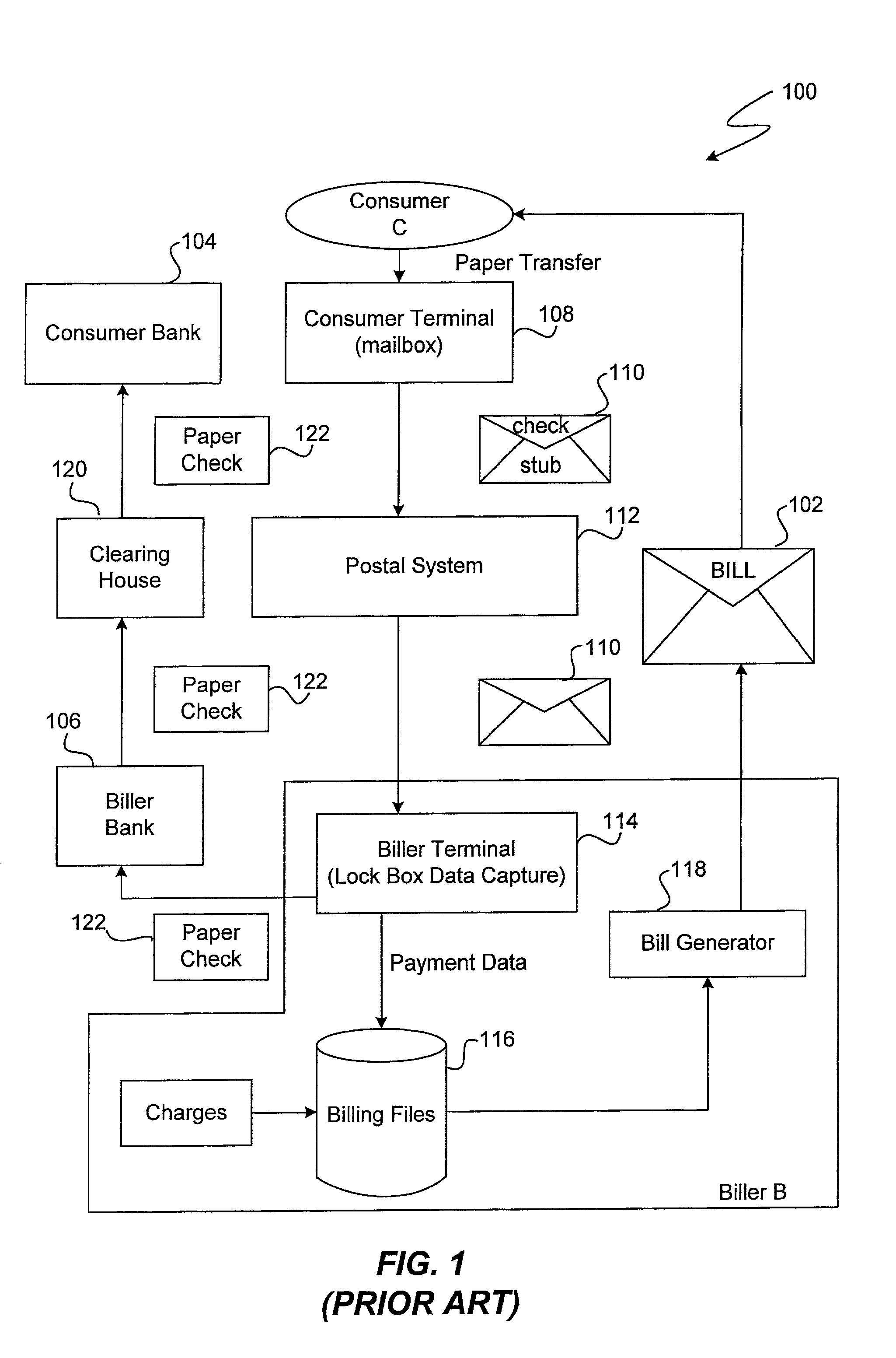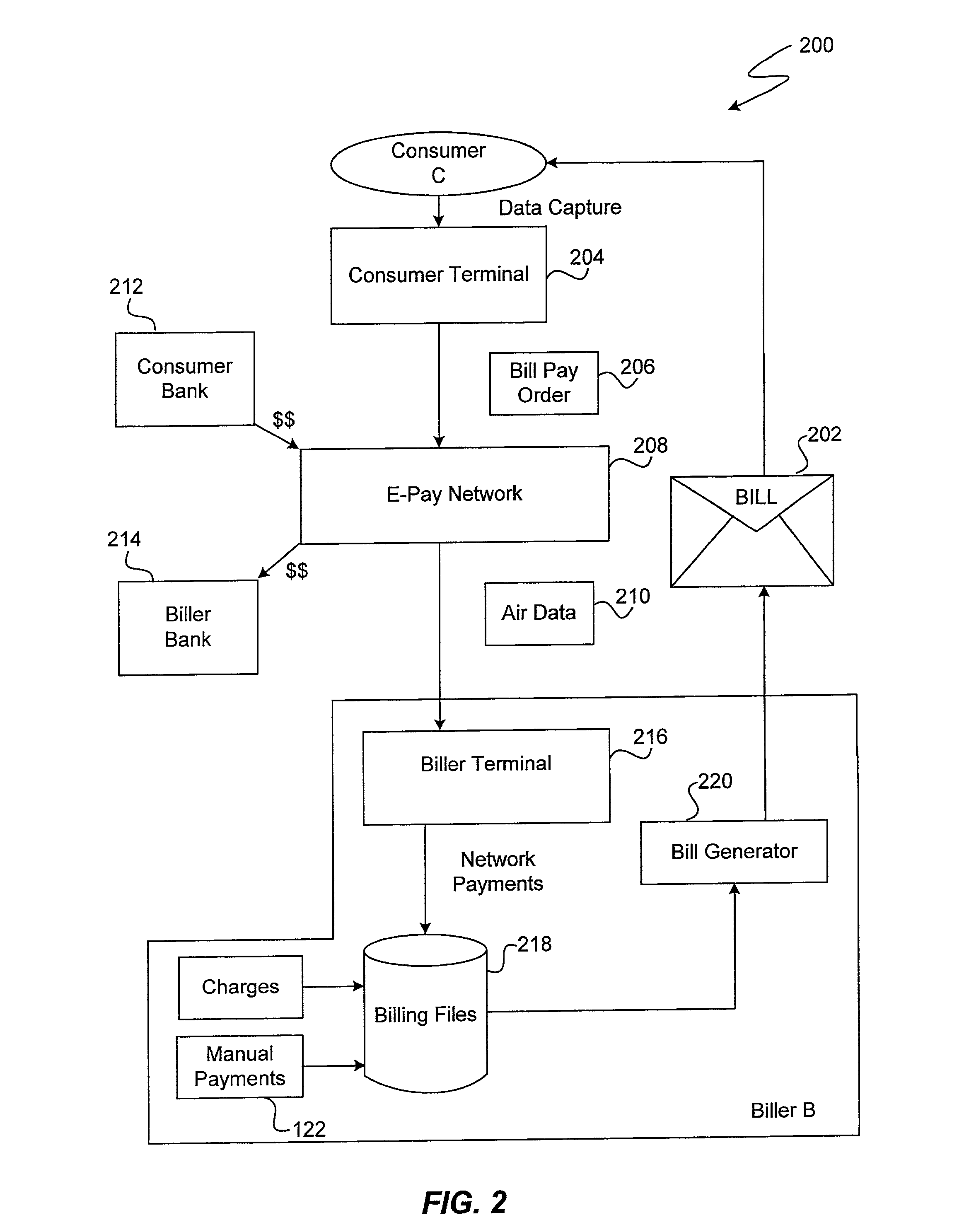Method and apparatus for paying bills electronically using machine readable information from an invoice
a bill payment system and machine-readable technology, applied in billing/invoicing, instruments, data processing applications, etc., can solve the problems of loss of the ability to connect a particular consumer with a particular biller without any prior connection, and the consumer cannot decide to pay a new biller and make a payment without the intervening delay
- Summary
- Abstract
- Description
- Claims
- Application Information
AI Technical Summary
Benefits of technology
Problems solved by technology
Method used
Image
Examples
Embodiment Construction
[0023]FIG. 1 shows a bill payment system 100 which is commonly used today to pay bills, where a consumer C pays a bill to a biller B when B sends a bill 102 to C. It should be understood that the term “consumer” is used here as an example of a bill payor, and the invention is not limited to use where the bill payor is a consumer. For example, the invention works equally well where the payor is a reseller. The actual payment of the bill occurs when a consumer bank (C bank) 104 transfers funds from an account maintained for C to a biller bank (B bank) 106, who then credits the funds to an account held for B. The other elements of system 100 are: a consumer terminal 108, which serves as the point of transit for a bill payment 110 into a postal system 112, a biller terminal 114, which is the destination of bill payment 110, a billing database 116 and a bill generator 118.
[0024]The bill payment process begins when biller B generates a bill for consumer C using billing database 116 and bi...
PUM
 Login to View More
Login to View More Abstract
Description
Claims
Application Information
 Login to View More
Login to View More - R&D
- Intellectual Property
- Life Sciences
- Materials
- Tech Scout
- Unparalleled Data Quality
- Higher Quality Content
- 60% Fewer Hallucinations
Browse by: Latest US Patents, China's latest patents, Technical Efficacy Thesaurus, Application Domain, Technology Topic, Popular Technical Reports.
© 2025 PatSnap. All rights reserved.Legal|Privacy policy|Modern Slavery Act Transparency Statement|Sitemap|About US| Contact US: help@patsnap.com



